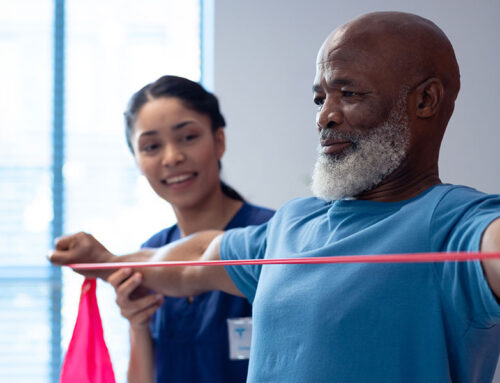Running could be described as one of the world’s most accessible sports. You can put on a pair of running shoes, head outside and as long as the surface is suitable, partake in your exercise of choice! Even when the weather turns nasty on us we can still use the trusty treadmill in the gym.
As enjoyable as this style of exercise can be, it does have its pitfalls….INJURIES! Following is a list of common injuries and what can lead to them:
Shin splints
Shin splints is an umbrella term used to describe 3 different injuries and is caused by repetitive stress on the tibia: periostitis, stress fractures to the tibia and non-acute compartment syndrome. All of these injuries result in aches and pains along the shinbone, or pain to the muscles in the lower limb.
Periostitis is inflammation of the tissue that covers the bone. It is an overuse injury and indicates that your lower limb is not coping with the amount of stress it is being placed under. The inflammation is caused by the muscle tendons pulling on the sheath of the bone to which they are attached. Pain is produced at the front of the shinbone and can come on in the morning before the body has had a chance to warm up and after prolonged exercise.
Stress fractures are small cracks in the tibia (shin) bone that are caused by repetitive stress. Runners are particularly at risk if they run on hard surfaces such as concrete. They usually develop gradually from stress placed on the tibia from hard surfaces and the surrounding pull of the muscles. (Often periostitis precedes a stress fracture and is a warning sign). The causes are the same as periostitis. The symptoms include a burn or ache on your shinbone. It will be tender to press on the shaft of the tibia. The pain will get worse when you run, can be sore to walk and also hurt when non weight bearing. A bone scan or MRI (not X-ray) are the types of imaging to best pick up stress fractures. The pain of a stress fracture is generally worse than periostitis. At least 6 weeks rest will be required for the bone to remodel and recover.
Non-acute compartment syndrome causes pain or cramping in the lower leg after a specific amount of exercise. Our muscles are grouped into specific sections that are surrounded by connective tissue. When the muscle swells during exercise sometimes the surrounding fascia cannot accommodate the space required. This leads to an increase in pressure in the compartment of a specific group of muscles, which can start to cut off the blood and nerve supply to the area. It is caused by athletic exertion. The pain is usually relieved by discontinuing the activity. (Please not this is not acute compartment syndrome)
Rest and Myotherapy to the surrounding fascia and muscles can help with all these pain complaints as well as correct foot wear, running surfaces, biomechanics and training strategies.
Knee pain
Knee pain is fairly common in runners. There are a range of things that can be causing knee pain such as referred pain and ligament damage etc. but some of the more common ones with runners are:Development of dysfunction with the quadriceps tendon which can lead to patella tendinopathy. This is due to the quadriceps group of muscles being too tight and having potential weakness which then puts too much strain through the tendon and onto the bony attachment
Tracking issues with the knee cap (patella) due to tight lateral quad muscles (such as vastus lateralis) with weaker medial quad muscles (such as vastus medialis) that change the way your patella sits in the joint groove.
Tension through your iliotibial band due to tight tensor fascia latae muscles, which again can cause tracking problems with the patella.
Medial knee pain due to the angle of force through the knee from weak gluteal muscles or poor foot biomechanics.
All of these issues are highly treatable with your Myotherapy treatments.
Back pain
A common cause of back pain in runners is a change in pelvic alignment, most commonly an anterior pelvic tilt. Runners are prone to this as most of us sit in office chairs all day (shortening the muscles at the front of our pelvis and quads) then go for our training runs and overload the same muscles. While this is happening muscles called hip flexors (iliopsoas) and our quadriceps group are getting shorter and tighter. Our hamstring muscles unfortunately then don’t have as much strength and our back starts to arch back. This changes the activation of muscles in our lower back, closes down facet joints and changes the shock absorbency of our spine. Your Myotherapist can help you to alter your posture, give you stretches and release work for the front of your pelvis and perform some soft tissue treatment to help alleviate your lower back pain in these circumstances.
Fatigue in core muscles – particularly gluteus medius, pelvic floor and transverse abdominis.
This is particularly an issue for long distance runners. The runner may set out on the run feeling good with a spring in their step, however after a set number of kilometres notice things such as back pain, referred pain into the legs or weak bladder muscles (particularly relevant to women whom have had children). This is often caused by core stability muscles that are functional short term, but not strong enough to last the distance required by the runner. All of these issues can be fixed by strengthening exercises: particularly to the muscles gluteus medius, transverse abdominis and pelvic floor. Your Myotherapist can assess your case and determine where the weakness lies and give you some basic strengthening exercises. If you would like a more thorough exercise regime for the core you may need to see your local Pilates instructor or exercise physiologist alongside your Myotherapist to resolve these issues.
Catherine Bainbridge – Elite Myotherapist






